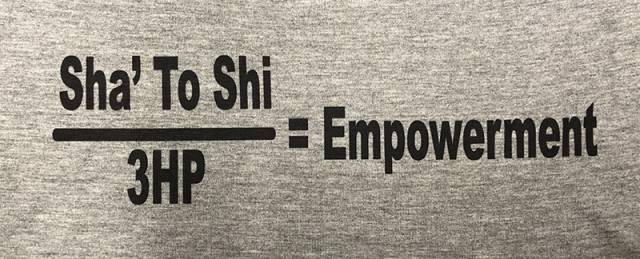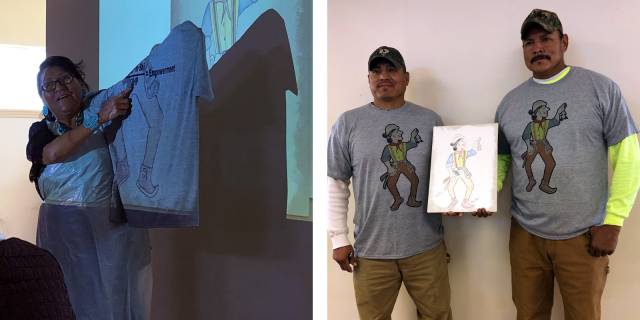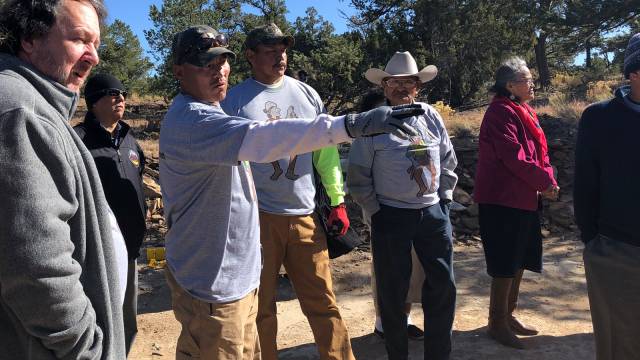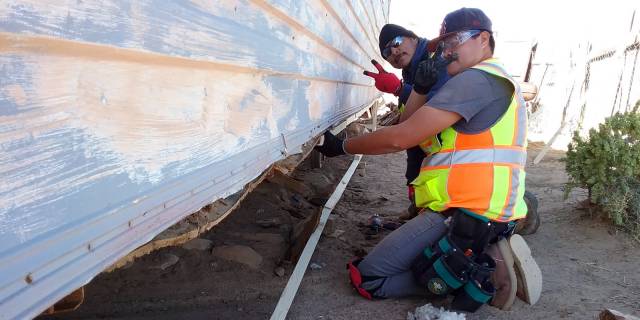You are here
Tackling Hantavirus on Navajo Nation with the Healthy Homes, Healthy People Partnership
Truly impactful, sustainable public health programs are nurtured and ultimately thrive at the intersection of public health science, community connection, strong partnership and the shared belief that together, our impact is greater.
The Healthy Homes, Healthy People (3HP) project is a unique example of such a collaboration. The program aims to reduce the risk of exposure to hantavirus among residents of Navajo Nation by providing rodent exclusion interventions and empowering residents to repair and reinforce their homes against rodents, and to increase awareness of hantavirus and its prevention among community members.
Hantavirus: A Quick Overview
The historical context behind this project is significant. In 1993, an outbreak of severe pulmonary disease in humans was reported on Navajo Nation. An investigation and laboratory testing confirmed the deer mouse, abundant in many parts of North America, was the rodent host for a newly recognized virus. Transmission of hantavirus to people can occur when fresh deer mouse urine, droppings or nesting materials are stirred up, for example, by sweeping up dust materials at home. Once the infectious process has begun, the cells lining the inside of the lung start to leak fluid into the airspaces, inhibiting breathing and, in the most severe cases, causing death.
The Centers for Disease Control and Prevention (CDC) continues to see human cases of hantavirus infection in the United States, including the severe form, called hantavirus pulmonary syndrome. Of the 728 cases reported in 36 states as of January 2017, 45 percent were reported in the “Four Corners” area shared by Arizona, New Mexico, Colorado and Utah—each part of, or adjacent to, Navajo Nation. Mortality rates for cases on Navajo Nation are approximately 44 percent.
Given the absence of a vaccine or other medication, prevention remains the most effective public health measure. In particular, rodent exclusion efforts in homes and buildings contribute significantly to keeping deer mice away from people.
Partnering to Save Lives
The 3HP program is a true partnership, bringing together the Littlewater Chapter of Navajo Nation, Navajo Epidemiology Center (NEC)/Navajo Department of Health, CDC’s Division of High-Consequence Pathogens and Pathology (DHCPP) and the CDC Foundation.
Ramona Antone Nez, NEC director, and Del Yazzie, NEC epidemiologist, together with scientists from CDC’s Viral Special Pathogen’s Branch, embarked on a plan to implement the rodent exclusion and education components of the intervention. And through generous funding and product donations from Reckitt Benckiser (RB), the CDC Foundation was able to purchase and procure project supplies, facilitate partnership building and provide program coordination.
We’ve started to think of the 3HP project not so much as a project but as a coordinated act of kindness in which we all participated.
Sustainability and empowerment coexist at the heart of the 3HP project, with program activities including training local carpenters and data collectors in safe methods for detecting, assessing, reporting and repairing points of rodent entry, including disinfecting and removal of potentially infectious materials from homes. The 3HP project also includes an education and training component aimed at homeowners to empower them with the knowledge to safely and properly disinfect and dispose of rodent-infested materials.
The Littlewater Chapter was selected as the pilot site for the 3HP project, with the goal of implementing the intervention in 100 homes. The project began with a pre-program survey to assess community acceptance of the project and better understand awareness of hantavirus and rodent prevention; a post-program survey will be completed in spring 2020, at project’s end.
Project Progress to Date
As of November, all 100 eligible homes have been identified and assessed, with the majority of households having completed the initial survey and participated in the hantavirus education program.
Led by carpenters from the Littlewater Chapter, home repairs have been completed in 50 homes, with the hope to complete construction work in all 100 by the end of January 2020. “We all can learn from each other,” noted Genevieve Castillo, manager for Littlewater Chapter. “When we complete all 100 homes, that will be a great milestone. But it won’t end there—each family will share the learning and awareness with their children.”
Eleano Rivas, lead carpenter and Littlewater Chapter member, quickly realized this was no ordinary construction project. “When I first started, I thought this was just another job. But then I noticed that a lot of different people were coming together here and were involved. And I thought, I want to be a part of this team.” As lead carpenter, he is teaching other people to do the work themselves, so the learning will continue. “When I come to work, I come with my whole heart. Every day there is a different person to make happy.”
Perhaps the project is best summed up by a note from representatives of Littlewater Chapter and Navajo Epidemiology Center: “We’ve started to think of the 3HP project not so much as a project but as a coordinated act of kindness in which we all participated.” If successful, 3HP will lead to improved health outcomes and empowerment for current—and future—generations.
For additional information about the Healthy Homes, Healthy People project and opportunities for support, please contact Helene Erenberg at herenberg@cdcfoundation.org.





